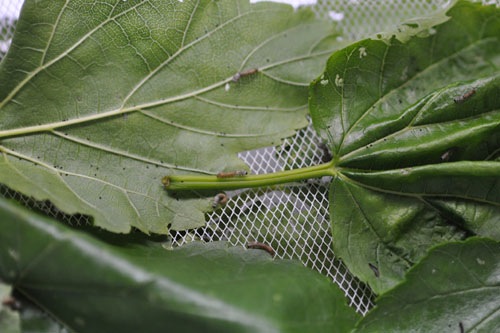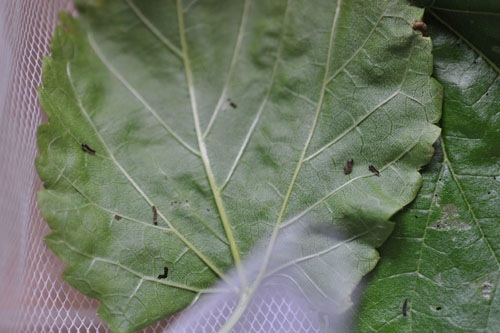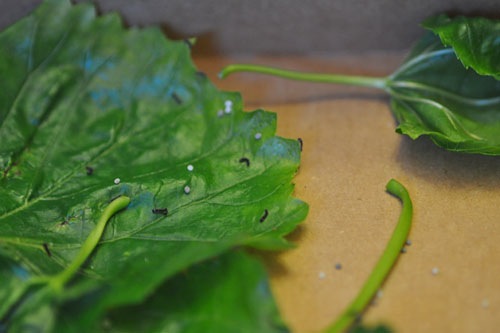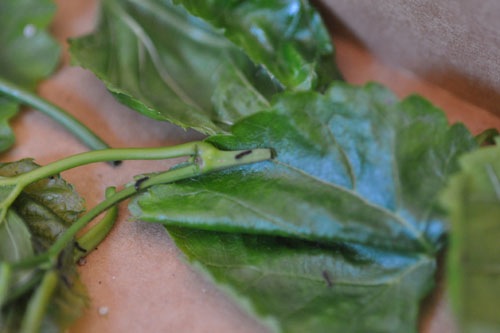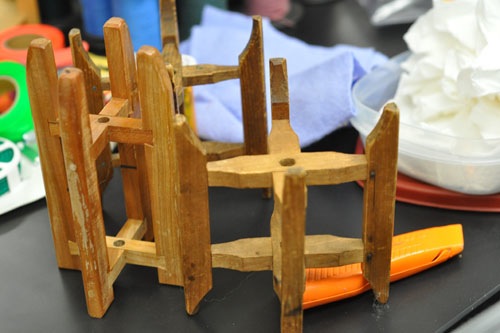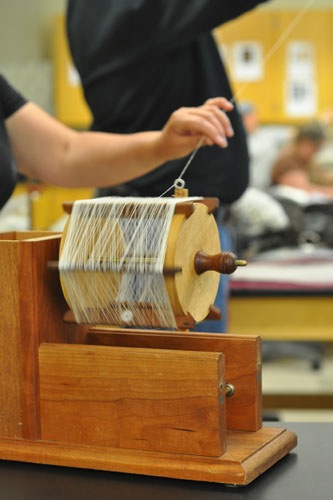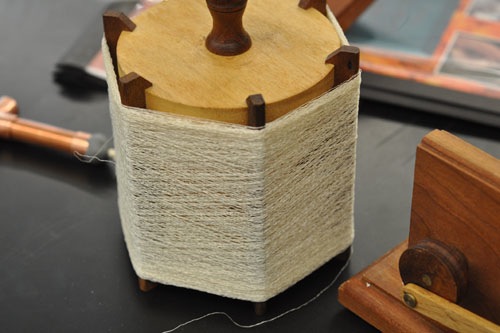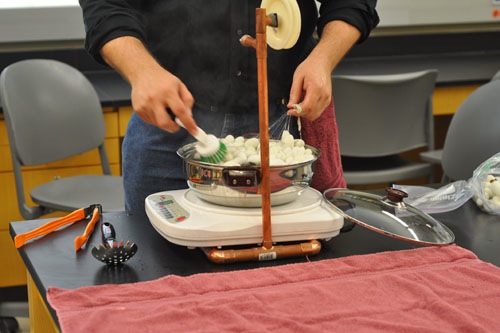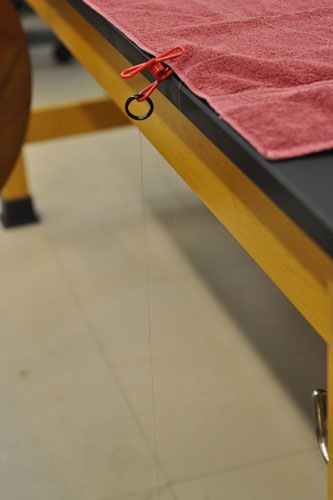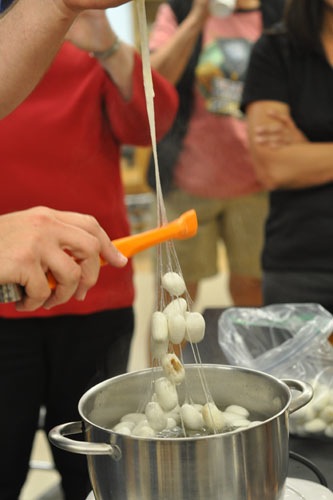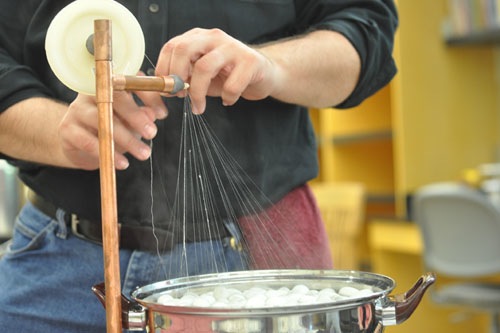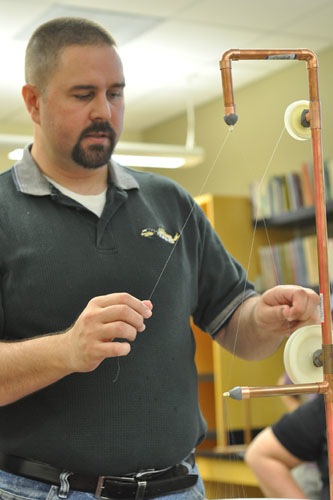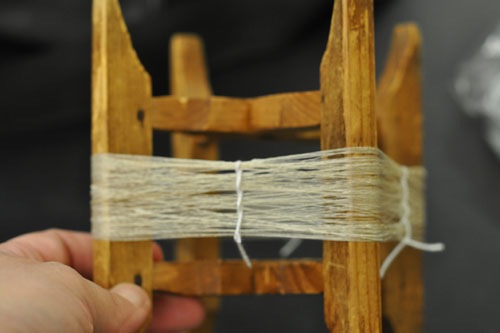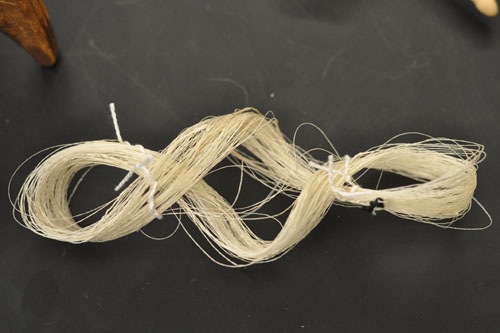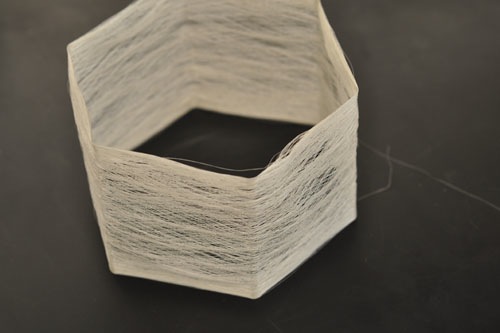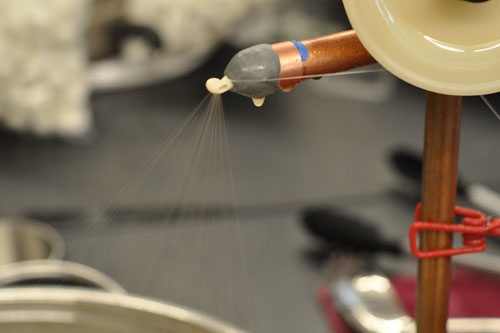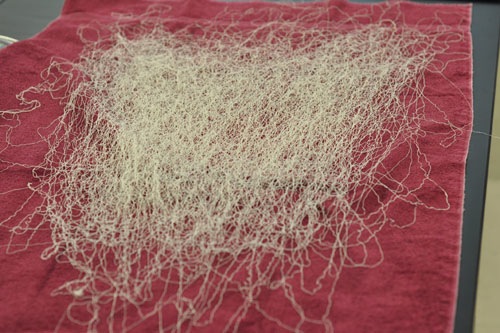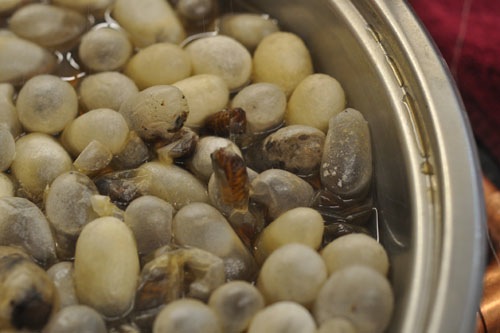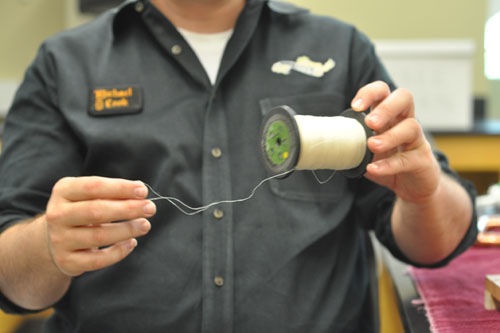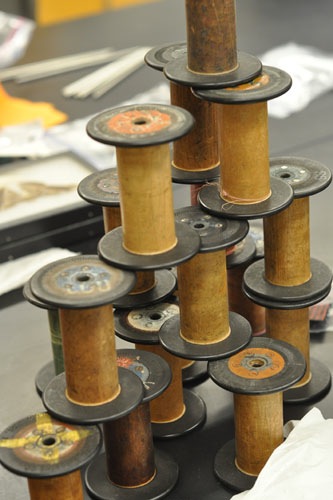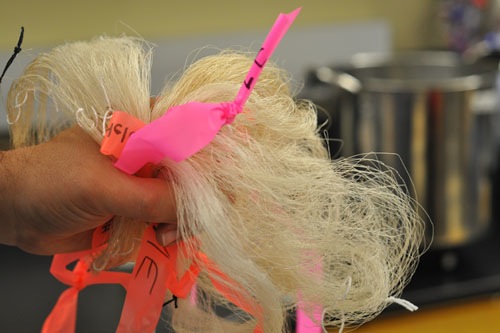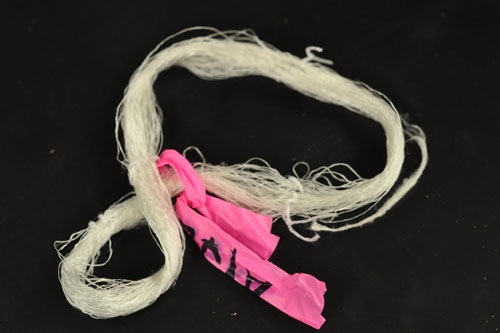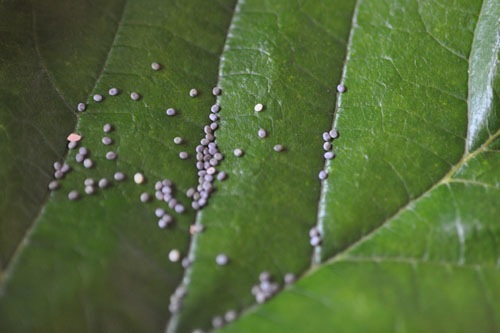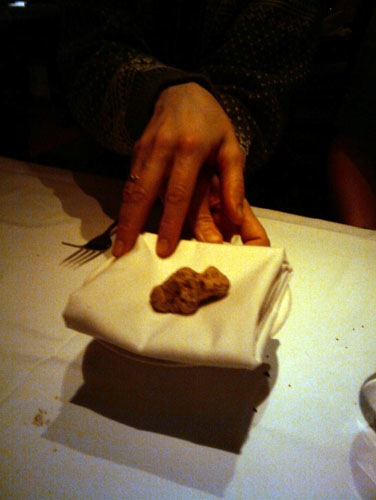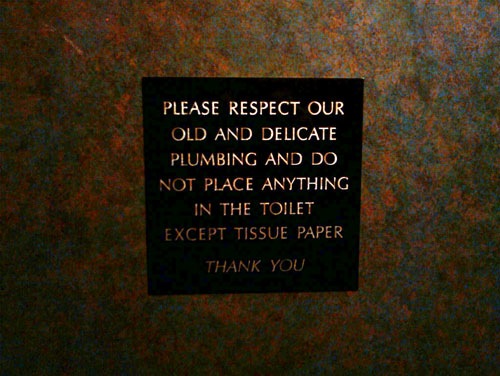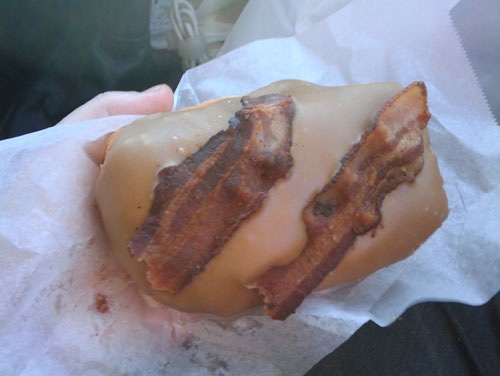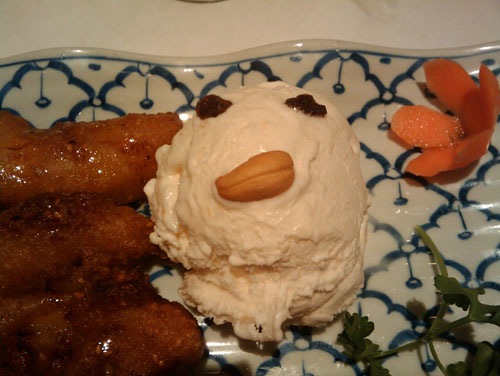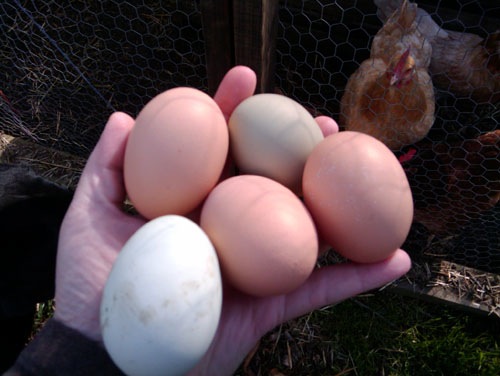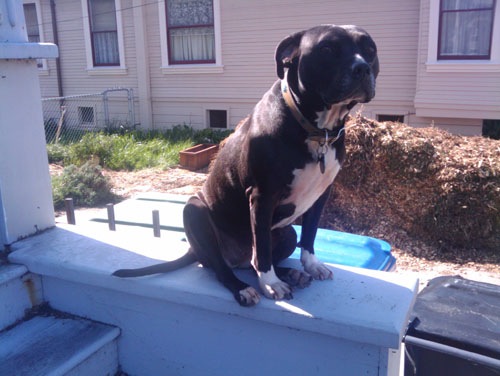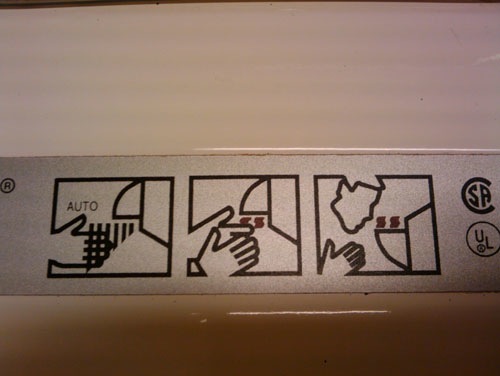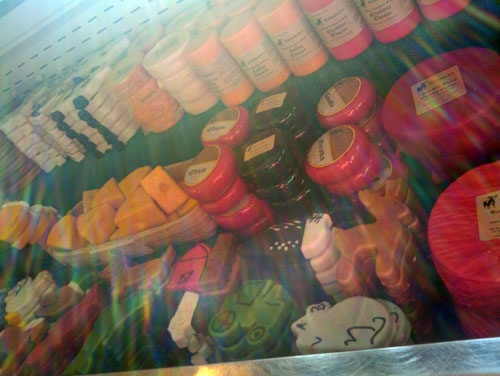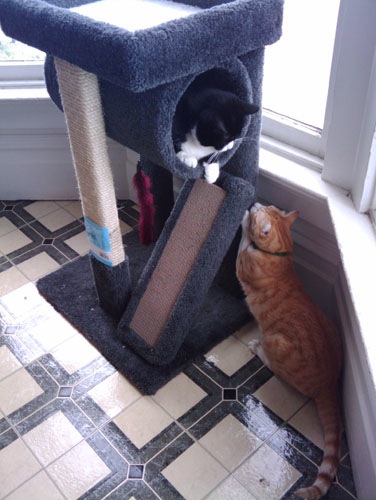I went to LA for a class on silk reeling this weekend (it was awesome; I will write about it later), and stayed an extra day to visit the Fashion District and buy some fabric.
The first thing you should know about the Fashion District is that if you want photos of the shops and your time there, bring a friend who is a photographer but not a crafty person, because otherwise you will forget the camera and spend all your time on the fabric and so forth. That is why I don't have many photos from the district; it didn't occur to me to take out the camera until I was on the rooftop parking lot, getting ready to leave. That person can also be your package runner if they are amenable.
The second thing you should know is that the district looks large on a map, but you can visit every shop in a few hours, allowing you to scout and take notes and then come back and buy what you want. Unless you're looking at the very last half yard of a fabric you MUST have, there's no need to buy right away. Places start to open around 8:30, and stay open until 4pm.
I ordered a map from the Fashion District web site, but it didn't come until the day after I left. I suggest that if you know you'll be going, order the map at least six weeks ahead of time; I ordered four weeks before I left, thinking (foolishly) that mail only takes two days to get to my house from LA. The map they sent was a letter-sized back and white map showing block numbers and general categories of stuff -- it could easily be put on their web site as a PDF. And obviously, since I didn't have it, it was not necessary.
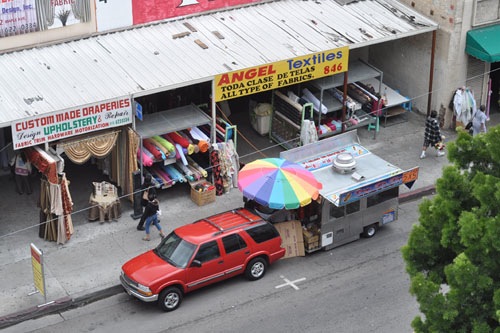
Here are the hints I followed:
1. Dress comfortably, because you will be doing a lot of walking, and the more you impress shopkeepers, the more they will charge you.
2. Park in a pay lot with a flat rate (I parked at 305 E. 9th St, where the entrance to the garage is paradoxically on Maple, for $5 for the day) in a central location.
3. After buying something, bring the packages back to your car; both because having lots of packages makes you look more likely to spend more money, and because it's a pain to manage packages in the tight spaces.
4. Purses are hard to manage, so use a backpack (I used my Timbuk2 messenger bag; it worked very well except while bin diving at Michael Levine Loft).
5. Bring a notebook to keep notes on where you bought things, places you didn't like, and places you want to get back to, because there is no way you are going to remember. I prepared some pages in my notebook with names of stores I wanted to visit, and took notes on them as I visited them. I also drew a small map of the district with my planned route.
6. Bring cash, because prices are often cheaper for cash.
Here's what I didn't do:
1. I didn't drink water or coffee. Bathrooms are few and far between in the district. There is apparently a coin-pay one at the Michael Levine store, but because I was not loading up on liquids I didn't need to unload. YMMV and your ability to function on less water may be different from mine. Also, it was not a hot day when I was there.
2. I didn't haggle with shopkeepers. I'm just not that into haggling. I did ask about how prices changed for larger quantities (my standard yardage to buy when I don't know what I'm buying for is five yards), and ended up buying more fabric in some cases because of that.
3. I didn't always pay with cash. Not everybody would discount prices for cash, so when they didn't, I paid with credit.
If I were doing the day over again, I would do it like this:
Go on a Tuesday or Wednesday. Some stores are closed on Monday, some on Sunday, some on Saturday. Saturday and Sunday are total zoos, and on Monday much of the merchandise has been picked over and not yet replenished. But Monday worked OK for me. I only missed out on one store I wanted to see.
Start at Michael Levine Loft, where there are bins of fabric to dive into. They open at 9am, and that's when you should get there. It's $2 per pound, and you will find some odd gems as well as a lot of awful, weird stuff. I went there after I'd been to a few shops and found near duplicates of stuff I'd bought for much more. Also, you'd be surprised how much fabric is in a pound. Grab everything that interests you, and then sort out what you want from that. If you have a helper with you, have them hold your stuff so you can get to the bottom of the bins.
After you stow your Loft purchases in your car, work your way around the district, making notes, until about 1pm.
Have some lunch -- there is a cart that sells bacon wrapped hot dogs. Don't think too much about what is in there; just eat it and get ready for the shopping.
While eating your hot dog, use your notes to make a plan of attack. It may be worth it to get a fabric at a store where the price for that fabric is a bit higher, if you're going to buy a bunch of other stuff, because shopkeepers will cut you a deal if you buy a lot.
If you care a lot about fiber content, bring things for burn testing. A lot of vendors have fabrics labeled as silk that clearly are not (I'd just spent the previous day reeling silk, so it was pretty obvious to me in most cases). If a vendor won't let you burn-test a snippet (outside, obviously), they probably have something to hide. Me, I'm willing to buy imitation silk instead of real silk if the price is right, and none of the iffier fabrics I bought were priced too high for synthetics.
So, with all that, what did I get?
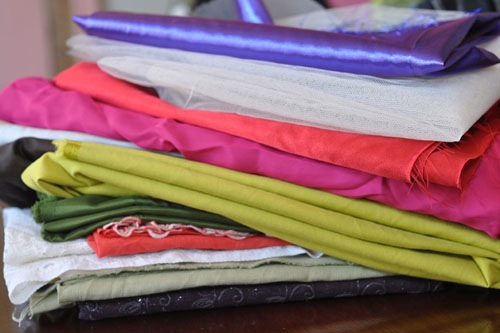
This pile of fabric is a little over five pounds, from the Michael Levine Loft. Some of the pieces are simply huge -- one is six yards of lining material. Some are tiny (there's a fat quarter of a funny red embroidered fabric in there).
I got lots of lining material, because it can get expensive and I like to line things. If I were hugely rich, I would always use cotton or silk linings, but I'm not, so I often use synthetics. I avoid rayon linings because they make things unwashable.
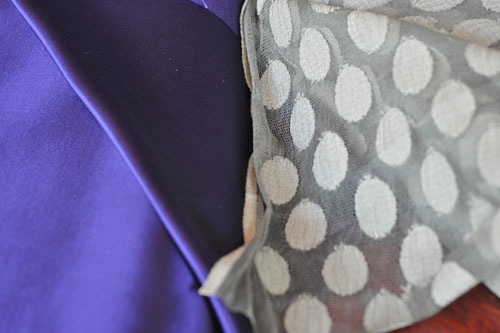
Across the street at the Michael Levine store, I got these two fabrics. I got a nice deal on the green stuff by buying the extra yard on the bolt, and it was already on sale for 30% off the (already low) price. The satin was $3 a yard (synthetic, obviously).
I'm half-kicking myself for not getting a couple yards of a really nice orange wool I saw there; it was $25/yard which was way too much, but I didn't see anything like it at any other store. Michael Levine also has a really, really nice section with high-end yarns, which I passed up because I have enough yarn right now.
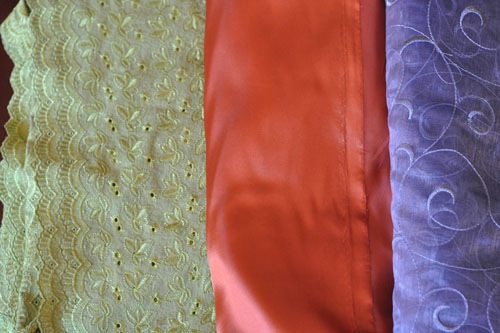
I got these three in a store I went into by mistake. The district is a bunch of narrow storefronts crammed together, with the only signs being above the awnings overhead (and thus often only readable from the street). I was aiming for the store next door to the place where I bought these. That's an embroidered green (I'm going to make it into a summer dress), an orange lining fabric, and a sheer synthetic. Obviously, it wasn't a total mistake to go in there.
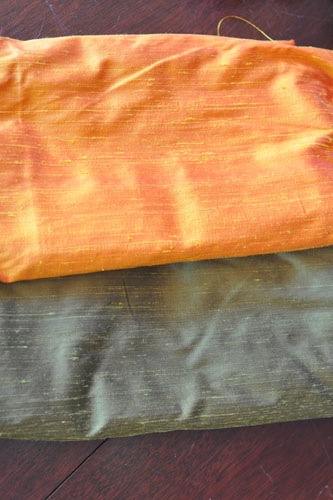
It's too bad a photograph can't capture the sheen of these silks; they're woven so that as they move the colour shifts and shines. This was my big splurge. $10 and $8 per yard. And yes, I tested them.
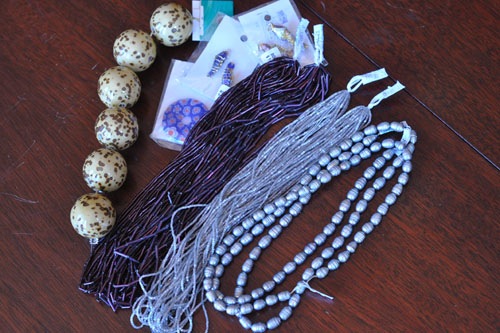
The district also has craft (mostly cheesy party supplies), bead, and trim stores. I love the trim, but can't quite figure out how I would use it. Someday I will have a truly great idea that just needs some theatrical drag queen trim, and I know where to go. I did get some beads, though. Those big round ones that look like eggs are going to become spindle whorls.
